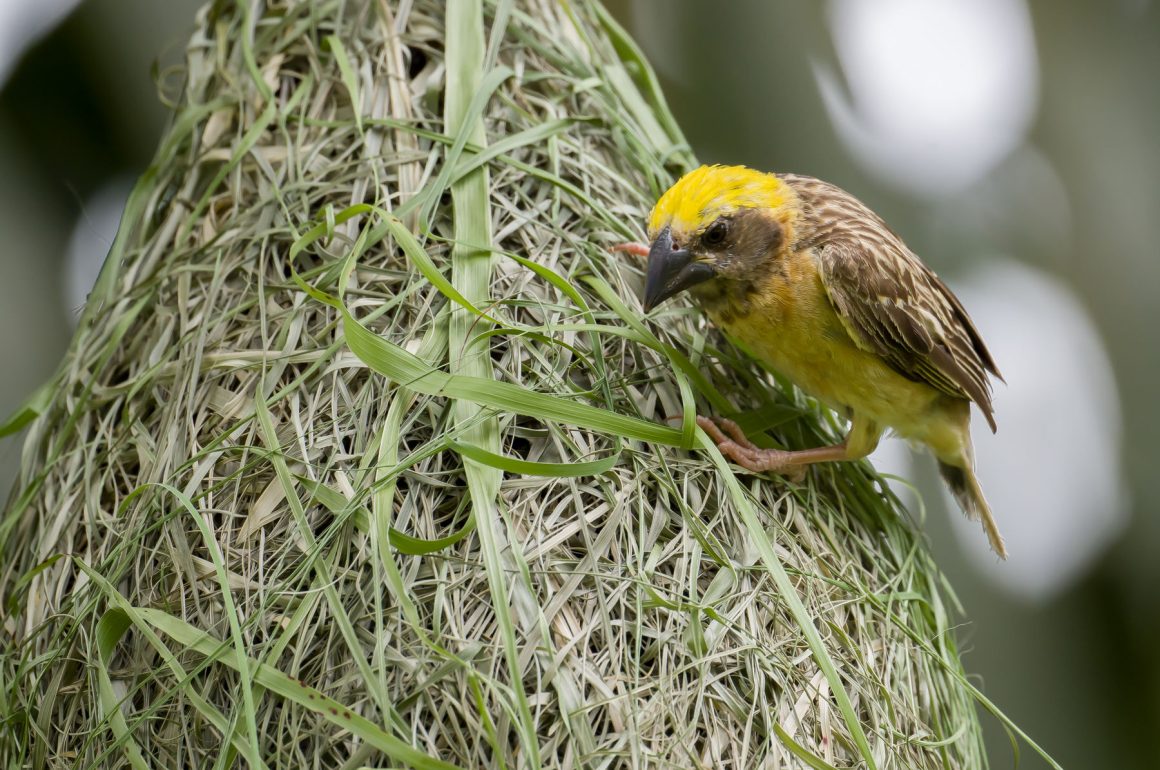
Let’s face it, folks. When it comes to home decor, we could all take a few lessons from the avian world. These birds are out here creating architectural masterpieces while we struggle to assemble flat-pack furniture without swearing. So, without further ado, let’s dive into the top five bird nests that will put your DIY skills to shame.
5. Social Weaver Bird Nests (Philetairus socius): The Avian Condominium
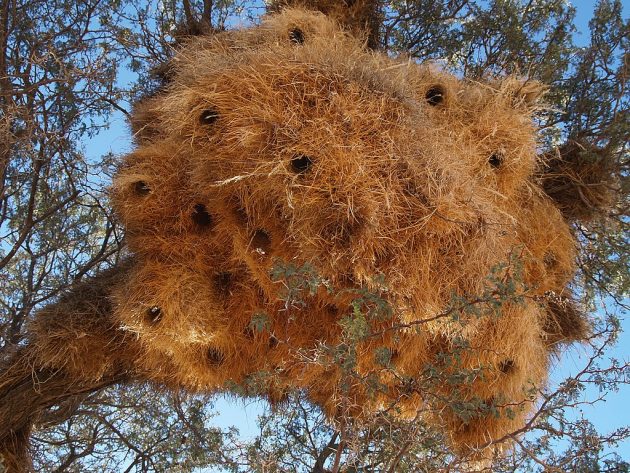
Photo: Flickr User Rui Ornelas, CC BY 2.0 https://creativecommons.org/licenses/by/2.0, via Wikimedia Commons
Starting our list are the Weaver Birds, true master architects of the bird world. These birds construct intricate hanging nests that resemble high-end condominiums. Crafted from grasses and leaves, these nests feature multiple entrances and even separate “rooms,” showcasing the bird’s impressive architectural skills. The nests can be up to 30 centimeters in diameter and hang securely from thin branches. While we struggle with assembling flat-pack furniture, the Weaver Bird effortlessly creates multi-room abodes with just its beak! Weaver Birds are commonly found in sub-Saharan Africa and parts of Asia, thriving in savannas, grasslands, and open woodlands.
4. The Long-tailed Tit Nest (Aegithalos caudatus): Cozy Minimalism
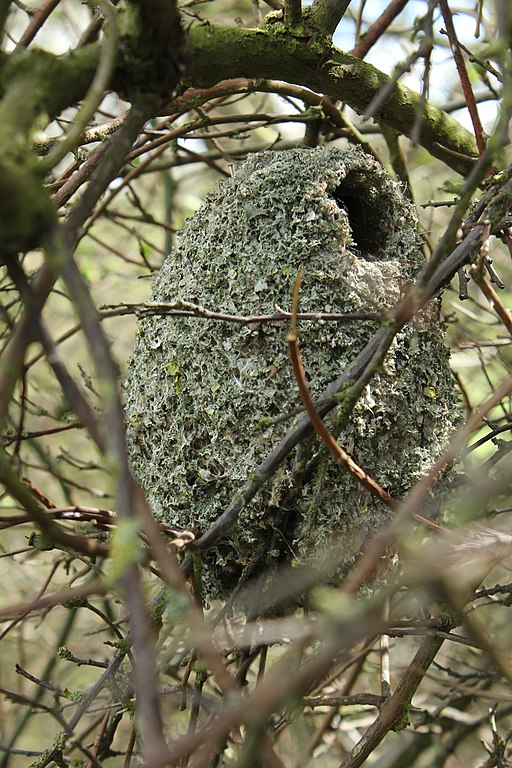
Photo: nottsexminer, CC BY-SA 2.0 https://creativecommons.org/licenses/by-sa/2.0, via Wikimedia Commons
The Long-tailed Tit excels in creating nests that epitomize cozy minimalism. These nests are small, oval-shaped structures, about the size of a grapefruit, and are made from moss, lichen, and feathers, all carefully woven together with spider silk and animal hair. The exterior often has a rough, camouflaged appearance, blending seamlessly with the surrounding foliage. It’s the original tiny house movement!
Nestled within dense shrubs or trees, the Long-tailed Tit’s nest is a testament to meticulous craftsmanship and efficient use of natural materials, providing a warm and well-insulated environment for the young. Long-tailed Tits are widely distributed across Europe and Asia, inhabiting woodlands, gardens, and hedgerows.
3. The Ovenbird Nest (Furnarius rufus): The Clay Fortress
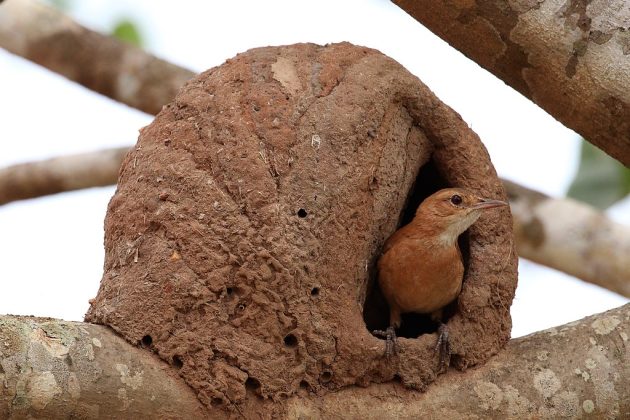
Photo: Charles J. Sharp, CC BY-SA 4.0 https://creativecommons.org/licenses/by-sa/4.0, via Wikimedia Commons
Ovenbirds are native to South America, particularly in countries like Brazil, Argentina, and Uruguay, where they inhabit open fields and forest edges. This bird constructs its nest from clay, resulting in a robust and weather-resistant structure that resembles a small oven or a clay igloo, hence its name. These dome-shaped nests, about 20-30 centimeters in diameter, feature a single entrance and often include a spiraling interior tunnel that leads to a central chamber. This design offers excellent protection against predators and harsh weather conditions. The Ovenbird’s nest is a remarkable example of using locally available materials to create a durable home, and its solid, earthy appearance makes it a standout in the natural landscape. Why am I craving pizza, all of a sudden?
2. The Baya Weaver Nest (Ploceus philippinus): The Hanging Masterpiece
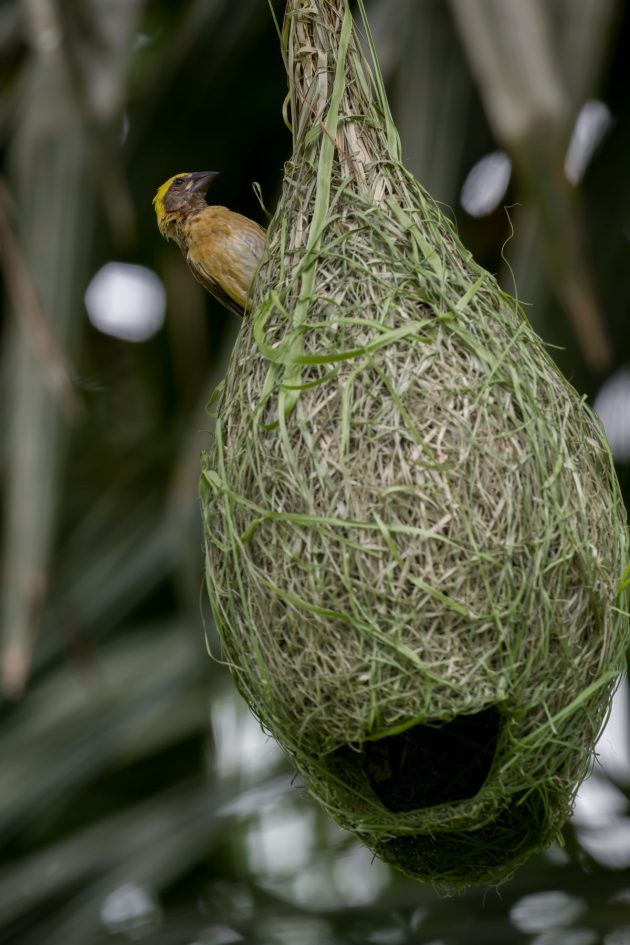
Photo: Kai Pflug (Sandakan, Sabah, Malaysia)
The Baya Weaver takes nest building to new heights—literally. These birds weave intricate, pendulous nests from grasses and plant fibers, which hang gracefully from tree branches. The nests are often elongated, pear-shaped structures with a long, tube-like entrance that leads to a secure chamber at the top. These nests can be up to 60 centimeters long and hang down like elegant ornaments. It’s like the bird version of a chandelier!
The Baya Weaver’s nest is not only functional but also an impressive display of artistic design and engineering prowess, showcasing the bird’s ability to create a safe and secure environment high above the ground. Baya Weavers are commonly found in South and Southeast Asia, particularly in India, Nepal, and Thailand.
1. The Tailorbird Nest (Orthotomus sutorius): The Sewn Sanctuary

Photo: J.M.Garg, CC BY-SA 3.0 https://creativecommons.org/licenses/by-sa/3.0, via Wikimedia Commons
At the pinnacle of our list is the Common Tailorbird, known for its extraordinary sewing skills. Using its sharp beak, this bird stitches leaves together with plant fibers, spider silk, or even human threads to create a secure, leaf-bound nest. The nests are typically constructed by folding large leaves and stitching them together to form a cradle-like structure. These nests are relatively small, usually around 10-15 centimeters in diameter, and are often hidden in dense foliage to protect against predators. Tailor-made, indeed! Common Tailorbirds are found in South and Southeast Asia, particularly in India, Sri Lanka, and Malaysia, where they inhabit gardens, forests, and urban areas. The precision and technique involved in constructing such nests are nothing short of remarkable, earning the Common Tailorbird the top spot on my list!
During my research on the most fascinating bird nests, I was astounded by the variety of techniques and designs birds employ to safeguard their offspring. Even after watching numerous videos of birds like the Tailorbird meticulously stitching leaves together, I remain in awe of their capabilities. Through weaving, molding, or stitching, these birds showcase an extraordinary talent for creating secure, beautiful, and impressive homes in the natural world.







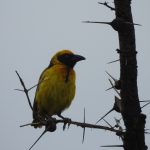

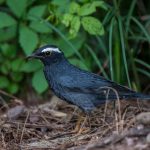


Truly fascinating, thanks!
Instruct a wise man and he will be yet wiser!
Great post. For the lister in me: 4 out of 5. That Baya Weaver…
I love your post. Birds are amazing for what they can do. I’ve been lucky to watch songbirds building their nests. It is fascinating watching a Baltimore Oriole sew together its pendulous nest.